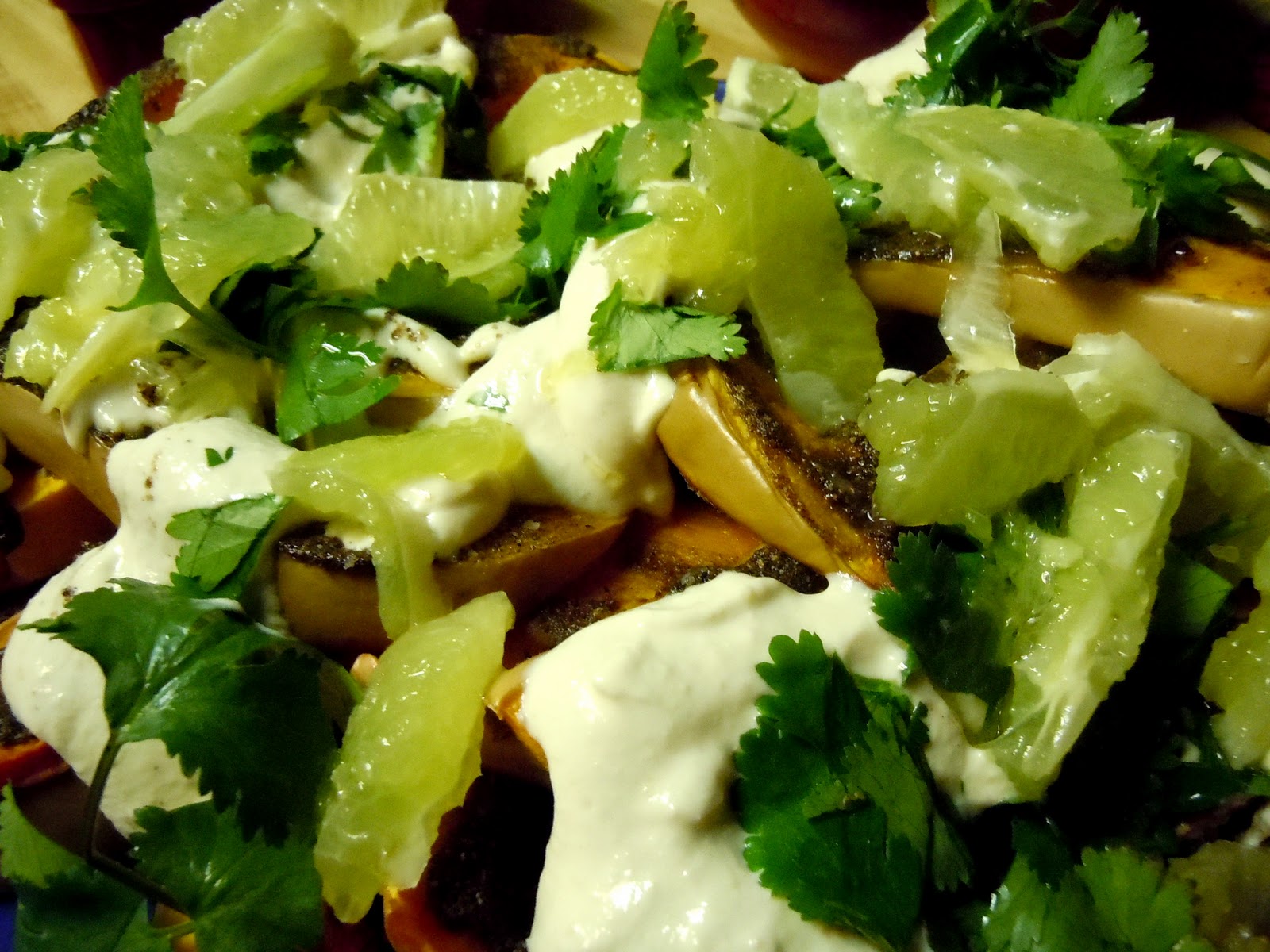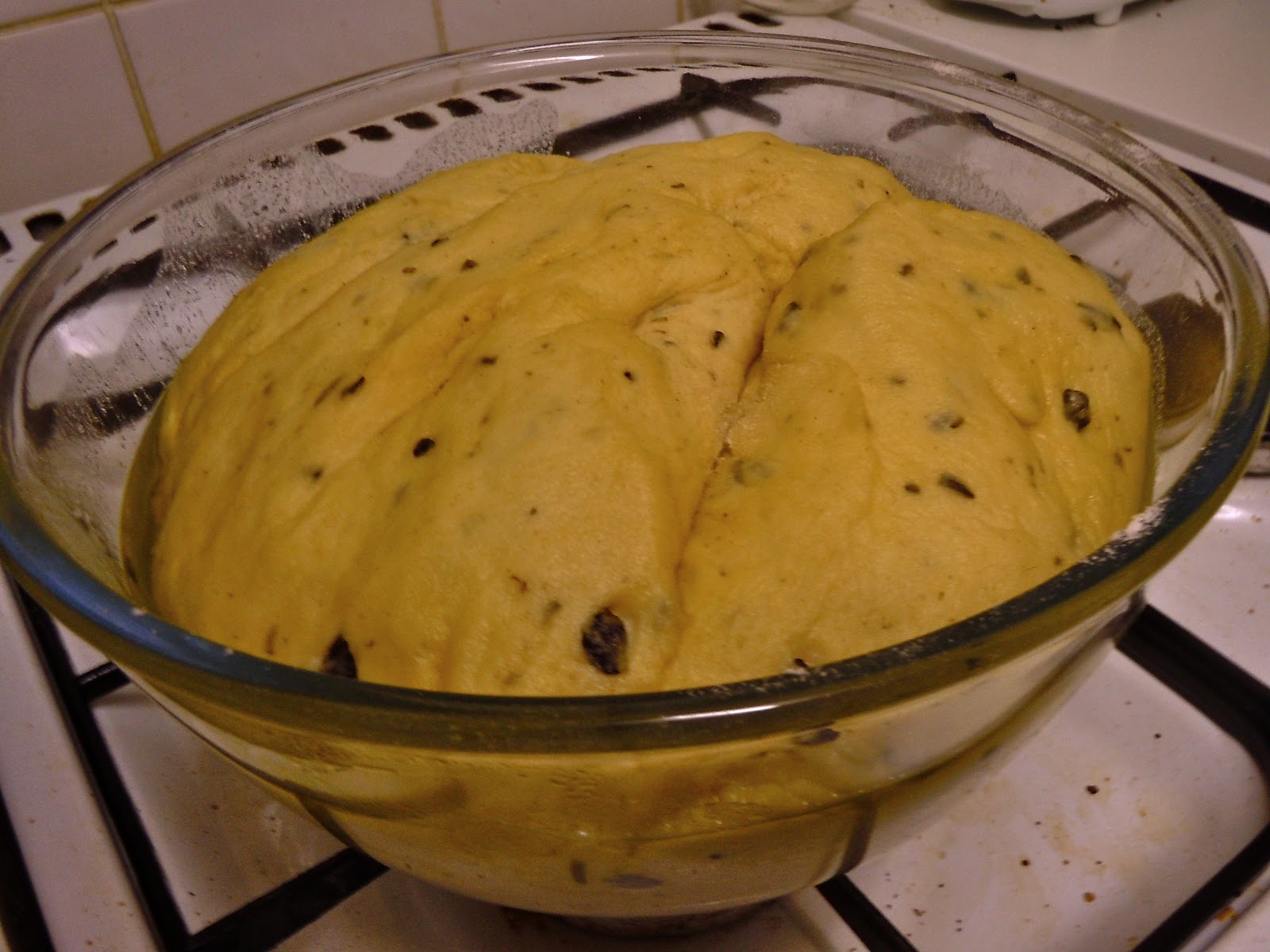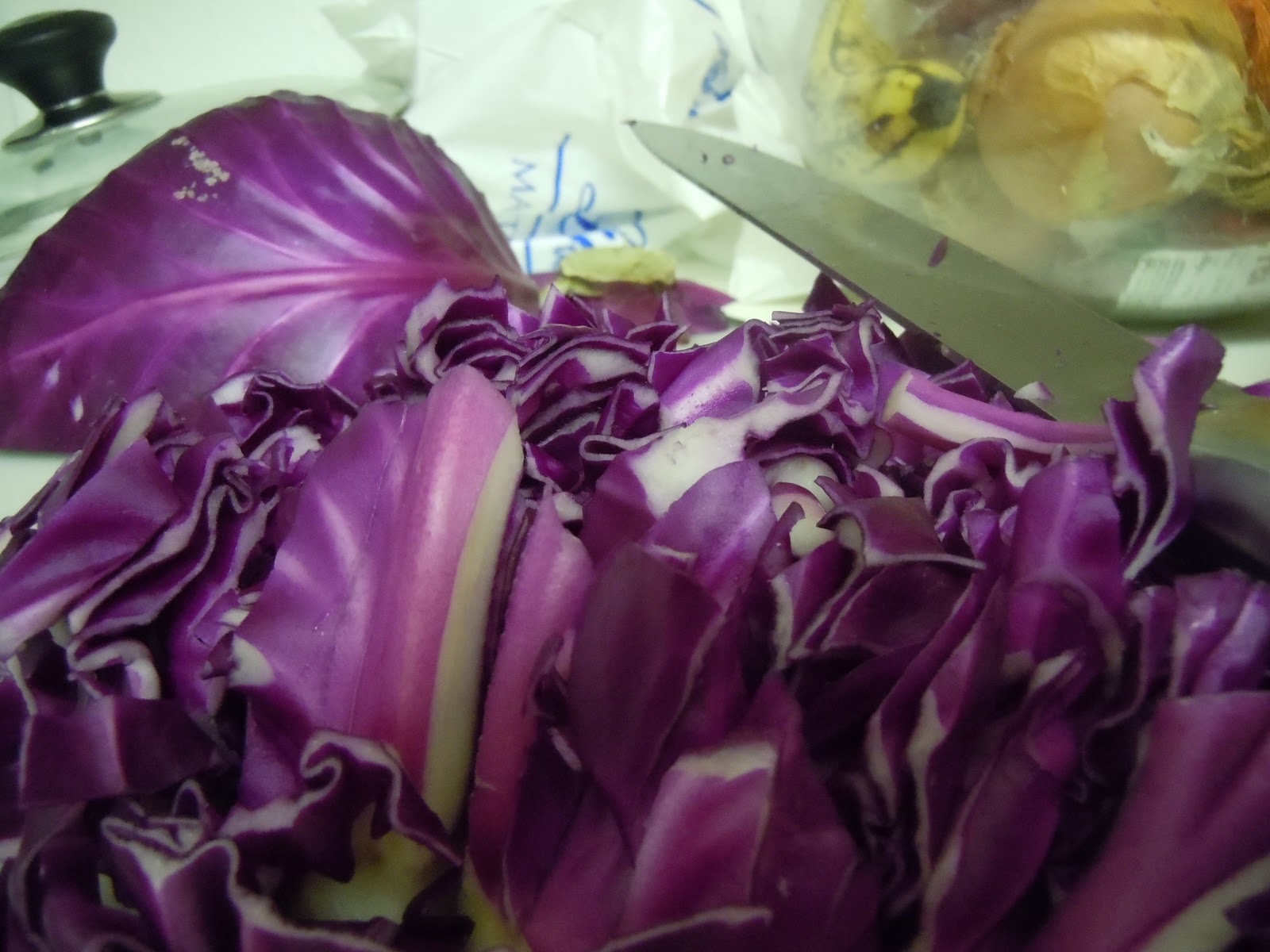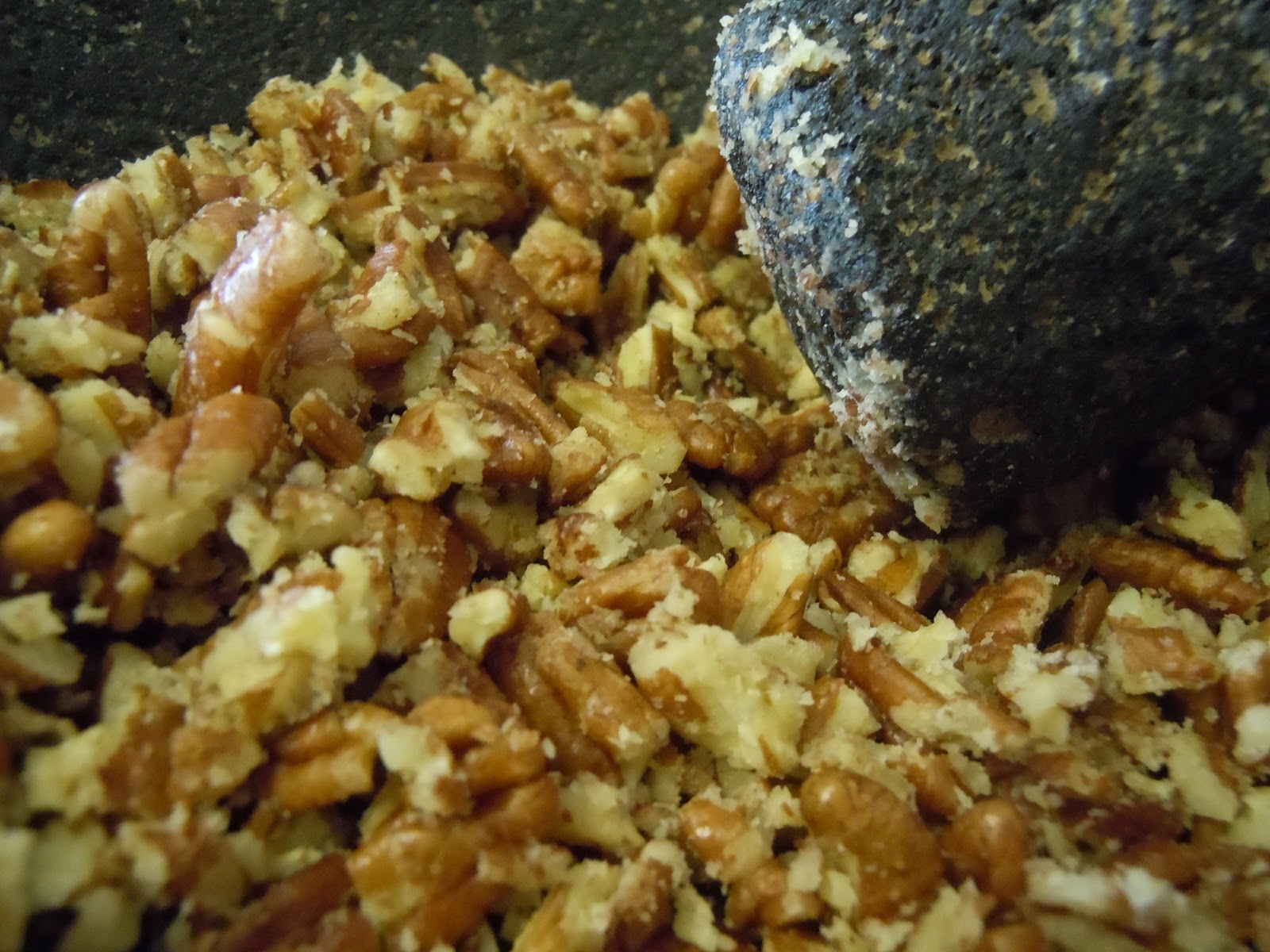All things considered, butternut squash is pretty forgiving. You can do almost anything to the humble gourd and it'll stand up and take the flavors without blinking an eye. Over the years I've found thousands of ways to prepare butternut squash (baked, roasted, broiled, grilled, raw, braised...), but props must go once again to Yotam Ottolenghi's Plenty for introducing me to yet another butternut squash flavor combination. Limes? Yogurt? Tahini? With squash? Lead on, Yotam.
The preparation of the butternut squash itself is pretty basic, thinly sliced and baked in the oven at high temperatures. What takes this dish into the realm of the unusual is the marinade of cardamom and allspice rubbed on the squash and then the interesting yogurt and tahini dressing the recipe calls for. Oh, and throw in some limes and chiles just for good measure.
But all dubious expectations aside, the dish not only looks pretty but eats pretty as well. Depending on your preferences for sauces, be cautious with the dressing. Although delicious, you don't want it to override the flavors of the lime and squash. That indeed would be a tragedy.
Serves 4-6
Ingredients
2 limes
Sea salt
4 tbsp olive oil
1 medium butternut squash (about 2 lbs)
2 tbsp cardamom pods (or ground cardamom)
1 tsp ground allspice
1/2 cup Greek yogurt
2 1/2 tbsp tahini
1 tbsp lime juice
1 green chile, thinly sliced
2/3 cup cilantro leaves
Method
Preheat oven to 400 F. Trim off the limes' tops and bases using a small sharp knife. Stand each lime on a chopping board and cut down the sides of the fruit, following its natural curves to remove the skin and white pith. Quarter the limes from top to bottom, and cut each quarter into thin slices, about 1/8 inch thick. Place them in a small bowl, sprinkle with a little salt, drizzle with 1 tbsp of the olive oil, stir and set aside.
Next, cut the squash in half lengthways, scoop out the seeds and discard. Cut each half, top to bottom, into 1/4-inch thick slices and lay them out on a large baking sheet lined with parchment paper.
If using the cardamom pods, place them in a mortar and pestle and work to get the seeds out of the pods. Discard the pods and work the seeds to a rough powder. Transfer to a small bowl, add the allspice and the remaining 3 tbsp of oi, stir well and brush this mixture over the butternut slices. Sprinkle over a little salt and place in the over for 15 minutes, or until tender when tested with the point of a knife.
Remove from the oven and set aside to cool. Peel off the skin, or leave on if you prefer.
Meanwhile, whisk together the yogurt, tahini, lime juice, 2 tbsp of water, and a pinch of salt. The sauce should be thick but runny enough to pour, add more water if necessary.
 To serve, arrange the cooled butternut slices on a serving platter and drizzle with yogurt sauce. Spoon over the lime slices and their juices and scatter the chile slices over the top. Garnish with the cilantro and serve.
To serve, arrange the cooled butternut slices on a serving platter and drizzle with yogurt sauce. Spoon over the lime slices and their juices and scatter the chile slices over the top. Garnish with the cilantro and serve.













